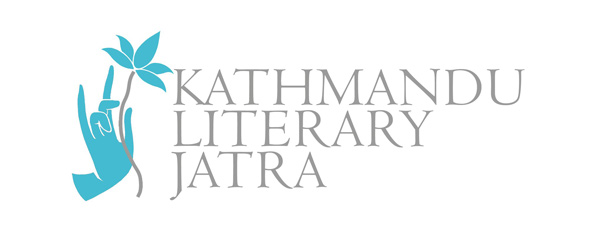Kahi nabhayeko Jatra Patan Durbar Square ma!
Every year when Nepalis return home after attending the biggest literary festival in South Asia, The Jaipur Literature Festival, people bring with them the hope, one that is mostly tinted with nostalgia— of Nepal having a festival to boast of its own. The wait, is seems, has come to an end as Nepal gears up for the inaugural ‘Kathmandu Literary Jatra’. Inspired by its Indian counterpart that has already hosted the likes of Salman Rushdie, Orhan Pamuk and Ian McEwan among other high profile names in English literature today, the Kathmandu Literary Jatra is going down a similar path with writers and publishers like Namita Gokhale, Mohammad Hanif and Tarun Tejpal in line to attend the country’s first literary jatra of such an international stature.
The three-day Literary Jatra (September 16-18) or litjatra as it has come to be known will be held at Patan Durbar Square and the surrounding area. Some of the writers who will be speaking in the event are Alecia Mckenzie, Alka Saraogi, Buddhi Sagar, Deepak Adhikari, Deepak Thapa, Devendra Bhattarai, Indran Amrithanayagam, Kanak Mani Dixit, Karna Sakya, Kesang Tseten, Kiran Krishna Shrestha, Kunda Dixit, Manjul, Mohammad Hanif, Momila Joshi, Namita Gokhale, Narayan Wagle, Nayanjot Lahiri, Patrick French, Poorna Man Vaidya and Pratyoush Onta.
While Nepali readers and writers are excited about the possibility of hearing and learning from international writers, the organisers defiantly assert that the organisation of the jatra has the sole purpose of promoting the works of Nepali writers rather than glamorising international writers. Furthermore, the jatra will give international exposure to Nepali writers. This will help encourage Nepali writers by giving them the idea that they have the potential for an international breakthrough, said Subani Singh, Festival Director. ‘It will be a better platform for the Nepali writers to showcase their works both in Nepali and English.’
Ujwal Prasain, the Kathmandu Post journalist who has contributed to the development of the sessions to showcase the works of Nepali writers, acknowledges the effort of the organisers to particularly support and promote Nepali writers. Prasain, who is himself an avid reader and promoter of Nepali literature, has been writing about Nepali literature in an attempt to help people cultivate an interest in it. ‘The kind and quality of works that are available today proves that we have both the literary mass and the writers whose works deserve international appeal,’ he said.
However, as optimistic as it can get, it needs to be brought into light, especially when the literary fest is just a month away, that there are sections of writers and publishers whose professional lives have been nothing short of one hurdle after another. ‘It is even much tougher when a publisher is a woman,’ lamented Archana Thapa who is the founder and editor of Akshar Creations. Launched last year, Akshar Creations’s first publication Telling a Tale, edited by Thapa, is a collection of personal stories of over 30 Nepali women. In three ways, Thapa said, she has been dominated; first as being a woman, second as a beginner publisher, and third as someone whose choice of books to publish differs from the mainstream. Telling a Tale brings to light personal stories of women, and this is something which has ‘not been done before’, and that is where ‘I suffer convincing the reader’. In addition, the publishers have financial burdens to take care of. Fine Print is a publishing house which has over 20 books to its credit including the critically acclaimed books of Buddhisagar’s Karnali Blues and John Wood’s Microsoftdekhi Bahundadasamma. The latter has the highest sale figures of 18,000 copies while the former 13,000. But, the figures do not really compensate for the cost of publication that are often done in India informed, Niraj Bhari, one of the founders of the Fine Print.
The litjatra can offer many lessons, confirmed Thapa. The range of programs from workshops, readings and panel discussions will surely help build proximity between national and international writers, publishers, journalists and academics. ‘Nepalis can learn lessons from them with everything related to publishing,’ she said. Thapa is mostly interested in and believes others would similarly take interest in ‘knowing how publishers select the works of new writers’, and the process of ‘bringing out a new book and brand new writer to the readers.’
Devendra Bhattarai who is the author of the critically acclaimed book ‘Registan Diaries’ is also renowned for his indelible efforts to pen the stories of hardships and sentiments of Nepali migrant workers in the Middle East. It was while he was serving his tenure as a Kantipur National Daily journalist based in Qatar that he came in direct contact with thousands of Nepali migrant workers who were insignificant to the dry desert and whose hardships were oblivious to all those that may care. One thing that pulled Bhattarai towards the Nepalis were their human sentiments and feelings ‘that is often heart rending and poignant’. Bhattarai protests that these issues are seldom represented in Nepali literature. ‘The only thing that continues to dominate the headlines in the papers is remittance, and hardly there is anything that would tell people about their personal lives, their hardships and emotions of being so far away from home and their loved ones,’ he explained. This is what compelled him to write in a way that has never been written in Nepali about migrant workers. The product is a book that has touched thousands of hearts.
As a speaker for the Jatra, he is planning to read a section of his book ‘Registan Diaries’ and relate what he saw and experienced being with the many migrant workers in the Middle East. He cites that it is important for people to explore soft lines of emotions in order to understand the hardships that Nepalis working abroad in difficult and dirty environments often suffer. This will enable readers to better understand the socio-political and economic structures of our society. ‘There are larger implications to how they suffer in the desert, to the extent that some either lose their hope or their lives,’ he said, highlighting the need for the representation and reflections of these stories , which are often full of human interest, poignancy and pain. He agrees the last and the most popular book related to these themes to have emerged in Nepali literature was Muna Madan, by the great Nepali author and poet Late Laxmi Prasad Devkota. ‘That was just that,’ he said, ‘we need more of these issues in our literature so that we can depict reality and still make people aware about the situation of Nepalis living elsewhere.’
The Jatra will be attended by writers, academics and journalists and thus is expected to brew a good amalgamation of discussions, readings and issues where people can engage themselves in the discourse of Nepal after it was freed from the Rana Oligarchy in 1951. Since then Nepal has been a vibrant country with discourses of inclusiveness, rights and democracy. It was also the time when the country’s literature scene really developed and engaged a wider scope of readership as well as publishing books. ‘In a way it is also a way of recollecting the literature vis a vis the political development of Nepal,’ said Prasain.
Adding to the discourse is also Sanjeev Uprety. Uprety has authored the famous, ‘Ghanchakkar’ which was also made into a play. Ghanchakkar was of a huge political and social importance in the context of Nepal as it depicted the scenes after the Royal Takeover of February 1, 2005. Uprety’s second book ‘Sidhantakaa Kura’ will be read, and he will speak on the recollective period of literature, in addition to the socio-political aspects of Nepali literature. ‘The Jatra will be an important platform for writers as there will also be international writers sharing the same platform. Ideas and knowledge can be shared and exchanged between the countries,’ he said.
The Jatra will altogether host 30 national writers and poets including those who have been writing in their mother tongues and 10 international writers. ‘It will be a good platform as people will open up to the fact that there are people who have been writing in their own languages other than in English and Nepali,’ said Singh. Prasain further added that including the works that have been written in native languages and bringing them to a bigger audience through the Jatra is an important realisation Nepalis can have. ‘Our culture and languages need to be preserved and showcased as much as there are works that have been written in Nepali and English.’
The Kathmandu Literary Jatra will not just promote works of Nepali writers but it will also highlight the importance of music and art. There will be reading sessions during the daytime and musical performances in the evening which will help garner a larger section of people; not just those interested in taking part in discussions but those who would also like to listen to local music, sipping tea in the lap of Patan Durbar Square; Similarly the addition of art will add much needed zeal and zest. Something that Nepalis have been looking forward to since they heard that the jatra is being held.

